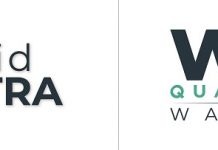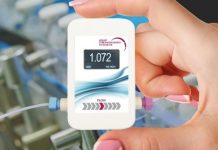The Expert Centre for Chemical Risk Management (ECTS)1 is a Dutch organization that translates scientific knowledge into practical solutions for the workplace. It combines the expertise in the fields of toxicology, occupational hygiene and occupational medicine.
Concerning REACH, the main perspective herein is the downstream user who has to comply with the user description described in the extended Safety Data Sheets (e-SDS). Downstream users need to identify and apply appropriate measures to adequately control the risks at their site, this has to be done within one year after receiving the e-SDS. ECTS helps them by performing a compliance check.
In the Netherlands larger, often internationally based companies have their own experts on REACH and are less in need of external support on this topic. Smaller companies tend to be less aware of their obligations to the REACH legislation. They are often confronted by the Dutch Labour Inspection (The Inspectorate SZW) and their supervision of compliance with the regulations concerning hazardous substances. These companies request the ECTS for assistance to create their substance register. It is very common that these smaller companies have not even heard of REACH or are not aware of their obligations to it.
Dutch legislation on hazardous substances in some fields even goes beyond information provided / needed within REACH. The Inspectorate SZW therefore has implemented a simple four step self-inspection method2 to help companies to check whether they comply with the legislation on hazardous substances. These steps are;
1. Iventarise (present substances, properties (of high concern),
2. Assess (exposure, limit values),
3. Take measures (temporary, structural measures),
4. Secure (changes in the workplace, instruction of employees, medical examination).
ECTS assists companies to go through the four-step-method and incorporates REACH in the process.
When making an inventory of present substances, the company is supported in gaining the needed information from suppliers like REACH compliant safety data sheets. To assess the exposure, information from the e-SDS can be used if it matches the company’s situation. If not, ECTS helps the company decide if they want to adapt the measures described in the e-SDS, ask the supplier to make it an identified use, change from supplier, make their own chemical safety assessment, or cease the usage of the substance. To check the assessed exposure a limit value is needed. DNEL’s / DMEL’s can be used if available but Dutch lawful TLV’s need to be taken into account as well. When deciding which preventive measures need to be taken the information from e-SDS can be used. However in many cases these are not applicable in the company’s situation. In those cases alternative measures are often advised and the ECTS helps them to perform their own chemical safety assessment by scaling or other assessment methods. To secure the company’s policy on hazardous substances ECTS advices how to use the information from the SDS to make brief Substance Attention Sheets that helps to instruct employees. We also point out the need to check for changes in work processes and supplied substances accompanied by REACH compliant SDS regularly. ECTS also advices on medical examinations that are indicated when working with certain substances.
ECTS on REACH
– Always finding a solution











